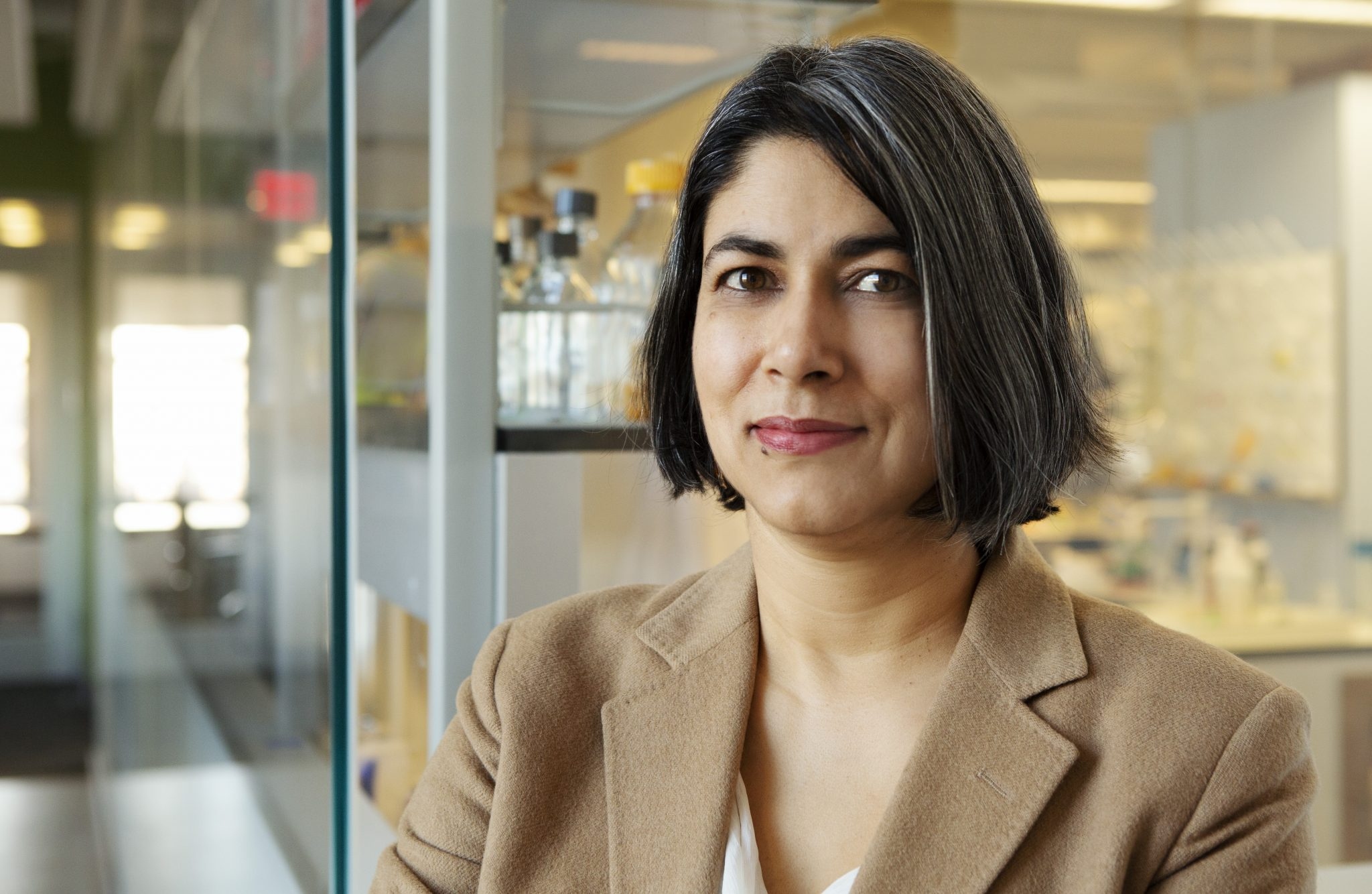When University of Alberta glycoscientist Lara Mahal visits other institutions to give talks, she’ll sometimes ask students to raise their hands if they’ve studied glycosylation in their classes. Very few hands go up — and the ones who have studied it typically mention it was a brief lecture, not even the duration of a full class. Were Mahal to ask about something like proteins, amino acids or DNA, she explains, she’d be hard pressed to find a single hand that wasn’t raised in response.
That gap in knowledge is what spurred her to launch the Glycomics Institute of Alberta, a new institution based at the U of A.
“Glycosylation plays a critical role in every major disease, and yet it is probably one of the most understudied areas of science,” says Mahal, director of the Glycomics Institute of Alberta and Canada Excellence Research Chair in Glycomics.
What is glycomics?
Glycomics is the study of particular types of carbohydrates or sugars known as glycans. Glycans are the powerhouses behind a wide range of functions in the human body, helping with everything from eliminating damaging bacteria to moving cells through the body. New knowledge and innovation in the field of glycomics could play a critical role in solving health challenges related to cancer, infectious diseases, neurodegenerative illnesses like Alzheimer’s and more.
“When you really start getting into the nitty-gritty, the number of things we don’t know how to fix and don’t understand very well is actually pretty high,” says Mahal, who earned her PhD in chemistry under the supervision of newly named Nobel laureate Carolyn Bertozzi. “I think part of that is because we keep ignoring pieces of the puzzle, and this is a really critical one.”
Mahal points out that the U of A already has a strong foundation in glycomics, in part thanks to Raymond Lemieux, a chemist and U of A graduate who was hugely influential in the field.
“Lemieux did the first synthesis of sucrose,” explains Mahal, a task that has been referred to as the “Mount Everest of organic chemistry” because of its impact. “This is part of the bones of University of Alberta science.”
That milestone was the beginning of a glycomics boom at the U of A. Lemieux’s work spawned a research centre that lasted nearly 20 years, and in 2015, the university became host to the Canadian Glycomics Network (GlycoNet). Just this year, GlycoNet Integrated Services, a branch of the network, got a funding boost of nearly $11 million to provide tools, expertise and infrastructure for researchers.
“Glycosylation is incredibly strong here at the University of Alberta. It is a central science to all sorts of different areas — biology, medicine, agricultural health.”
The current institute membership already includes researchers from the departments of chemistry, biology and pharmacology, and Mahal anticipates that as membership grows, more departments and faculties will be represented.
However, Mahal wants the institute to build connections not just among glycoscientists with existing expertise in the field, but also among researchers who might not realize the impact glycans may have on their work.
“Part of it is helping everyone’s research by giving them the connections and the resources to figure out how to incorporate these really critical aspects into their work.”
Similarly, Mahal highlights that the institute’s educational efforts will include workshops aimed at undergraduate and graduate students who want to learn more about the topic, as well as workshops for researchers later in their career, which Mahal envisions as “sort of a cheat sheet for glyco, covering the essential things that you need to know to start thinking about glycosylation in your research.”
The institute website also offers a variety of resources, from numerous databases available in glycosylation research to videos that help unpack the subject.
“We want to educate the larger biomedical community about the importance of sugars, which has really been undervalued,” Mahal notes.
“It’s about communication, collaboration and education — those are really our main mandates.”
Life-saving potential
Current members are looking at the impact sugars have on everything from the immune system to transplantation outcomes — a hallmark of institute member Lori West’s groundbreaking research.
“Transplantation rejection is mostly based on the sugars in your blood group. Understanding how we can control and manipulate that is critical to be able to expand transplantation research,” Mahal explains.
In some of her own work, Mahal has examined diseases like influenza, finding that high levels of a certain sugar in the lungs are linked with more severe and even fatal outcomes.
“If we can make it so that when we get sick with the flu from a horrible pandemic strain that would normally kill 50 per cent of the population, but we now know how to prevent it from killing any of us, that’s enormous. And sugars might really tell us that.”
To celebrate the official launch of the Glycomics Institute of Alberta, Mahal will give a hybrid in-person/virtual public lecture on Oct. 14 entitled “Mystery of the Glycocode: The Secret Science of Sugars,” where she will walk attendees through 10 different sugars and explain some of the biology associated with them to show the impact these sugars have on our health.
“I want people to walk away with an idea that sugars aren’t just the stuff that you eat. This interesting code is telling us lots of information and controlling things, and as a result can really help us to get to the next generation of drugs and biomarkers that will help with human health.”
